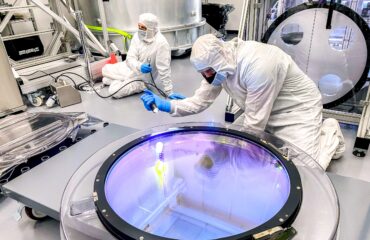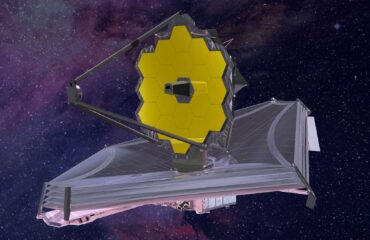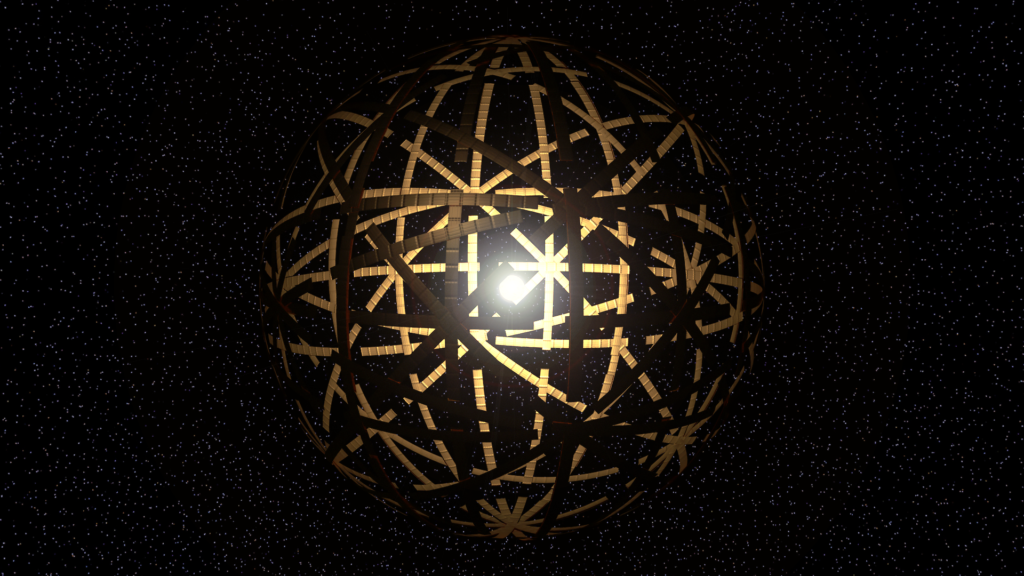
“A Dyson Shell of massive independently orbiting arched panels.” Image: Kevin Gill
By Mariana Meneses
Black holes are areas in the universe where gravity is so powerful that nothing can escape from them, not even light.
They are believed to be created when a star at least three times more massive than our Sun runs out of fuel and collapses. Stars of smaller mass, such as our Sun, can end up as red giants, white dwarfs or neutron stars, although the exact thresholds and processes can be more complex and depend on various factors.
For decades, several theories have been advanced on the potential for black holes to generate energy that could be harnessed for use sometime in the possibly distant future. A recent test of one of these theories may have brought the future just a little bit closer to the present.
To understand the significance of the test, it’s necessary to set out some of the things we know about the still-mysterious nature of black holes that appear to be in the middle of every galaxy in the universe.
Gravity and Black Holes Operate in Tandem
Once a black hole is formed, it can expand by pulling in surrounding matter. Supermassive black holes, which are millions of times larger than our Sun, can form by pulling in other stars and merging with other black holes.
There’s a specific distance from a black hole at which nothing can escape its gravitational pull, a point of no return known as the event horizon. Based on the mass of the black hole, the event horizon is where the fabric of spacetime appears to collapse into a singularity where there is no difference between space and time and therefore no “where” or “when.”
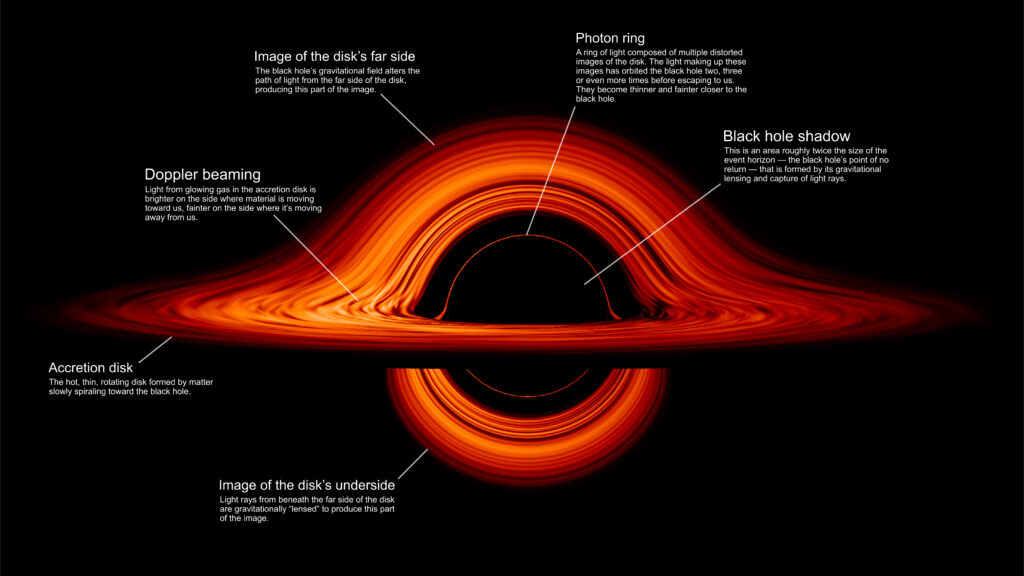
“Seen nearly edgewise, the turbulent disk of gas churning around a black hole takes on a crazy double-humped appearance. The black hole’s extreme gravity alters the paths of light coming from different parts of the disk, producing the warped image.” Credit: NASA’s Goddard Space Flight Center/Jeremy Schnittman.
Just outside the event horizon, accretion disks are swirling disks of gas and dust that orbit supermassive black holes, emitting copious amounts of energy in all ranges of the electromagnetic spectrum.
Studying accretion disks can enhance astronomers’ understanding of black holes and the evolution of the galaxies centered on them. However, most accretion disks are impossible to image directly because of their extreme distances and relatively small sizes. Instead, astronomers use the spectra of light emitted from within the disk to characterize its size and behavior.
Recently, astronomers using the Gemini North telescope have made the first-ever detection of two near-infrared emission lines in the accretion disk of the black hole in the middle of galaxy III Zw 002, in a rapidly-rotating quasar located in the constellation Canes Venatici. While providing evidence of accretion disks, this observation has also placed a new limit on the size of these magnificent structures.
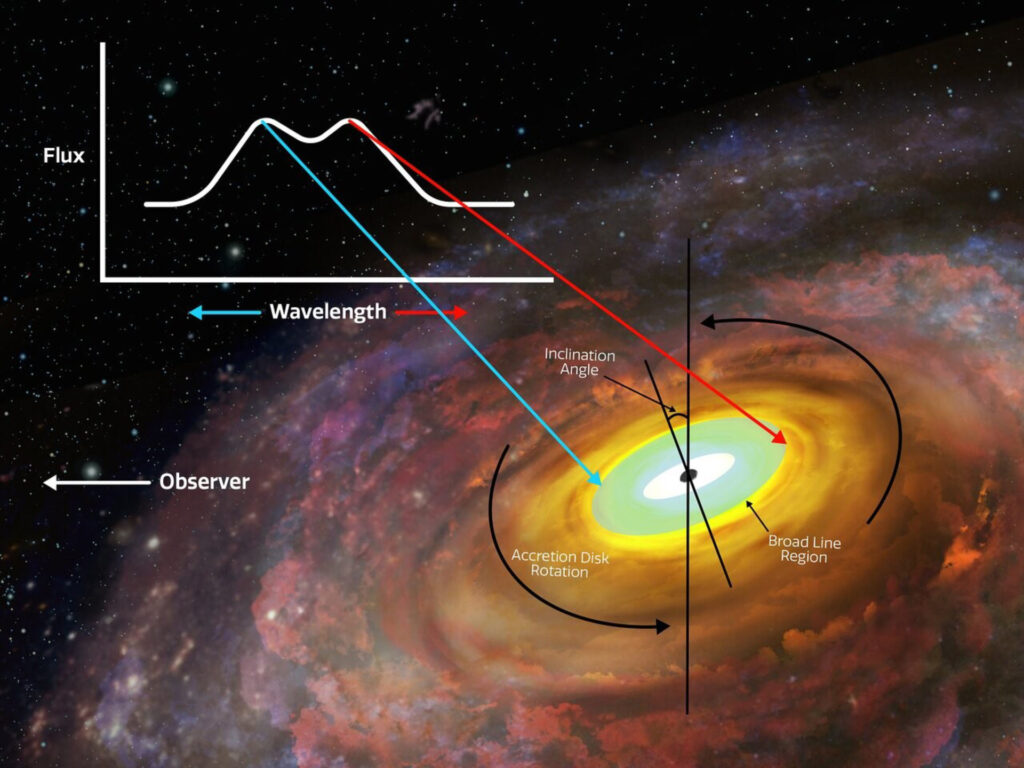
An artist’s impression of a supermassive black hole with an accretion disk. Image credit: NOIRLab/NSF/AURA/P. Marenfeld.
Recent research revealed that a huge black hole tore apart a nearby massive star, throwing its pieces into space.
Scientists used special telescopes to look at the pieces and figure out what kind of star it was, and discovered it was about three times bigger than our Sun. This is an example of a “tidal disruption event,” when a star gets too close to a black hole and gets ripped apart by its strong gravity.
Black Holes do More Than Destroy Matter
But black holes are not synonymous with only destruction. In fact, they could potentially serve as energy sources for advanced civilizations. By exploiting the unique properties of their intense gravity and spin, objects could gain energy from a black hole.
Imagine a black hole as a super powerful cosmic blender. Now, think of an object that you lower into this blender. The intense gravity and spin of the black hole would make this object go faster than light.
Back in 1969, Roger Penrose came up with this idea and said that this super-fast object would have “negative energy“.
Now, here’s the cool part: if you split the object in two, so that one half falls into the black hole and the other half is pulled back, the half you pull back would gain energy from its other half spinning within the black hole. This is like getting free energy from a cosmic blender. However, to do this and harness the energy, the technology (and, thus, civilization) would need to be advanced, way beyond anything we humans can do today.
In 2020, scientists found a way to test this theory using sound instead of light. Sound waves travel much slower than light and have lower frequencies, and therefore could be tested with an object spinning at a rate far lower than light waves would require. They used these sound waves to mimic the theorized conditions of light.
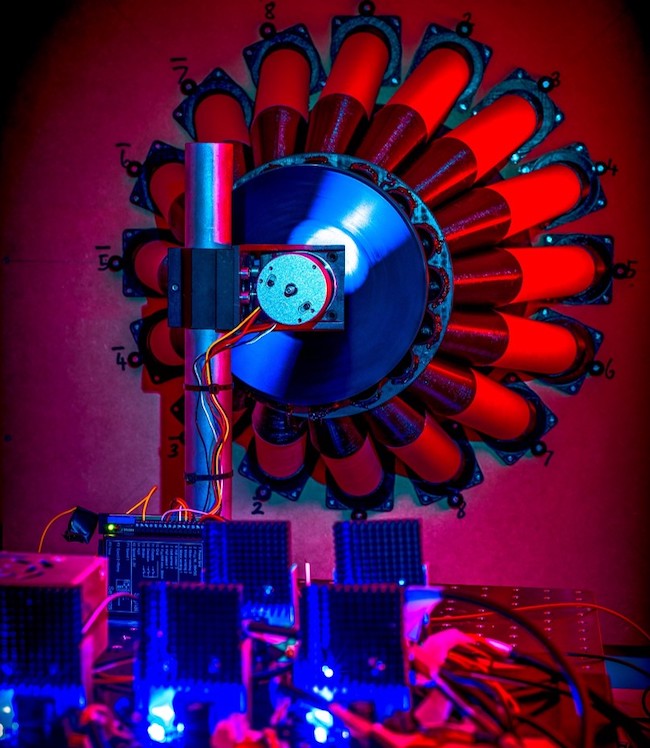
The sound wave testing apparatus used by researchers at the University of Glasgow. “Twisted sound waves were directed towards a rotating sound absorber made from a foam disc. A set of microphones behind the disc picked up the sound from the speakers as it passed through the disc, which steadily increased the speed of its spin.” Image: University of Glasgow.
“As the speed of the spinning disc increases during the researchers’ experiment, the pitch of the sound from the speakers drops until it becomes too low to hear. Then, the pitch rises back up again until it reaches its previous pitch – but louder, with amplitude of up to 30% greater than the original sound coming from the speakers.” (University of Glasgow)
The research opens up many new avenues of scientific exploration, although the theory may not be the only way an advanced civilization could be using black holes for power. Dyson spheres are another theorized method.
A Dyson sphere is a hypothetical megastructure that completely encompasses a star or black hole and captures a large percentage of its power output.
The concept was first proposed by physicist Freeman Dyson in 1960.
The sphere itself would be made up of a series of orbiting platforms or habitats, which would collect the energy emitted by the object at its center and transmit it to the civilization’s home planet or other locations for use. Although an interesting concept, no such structure has yet been detected.
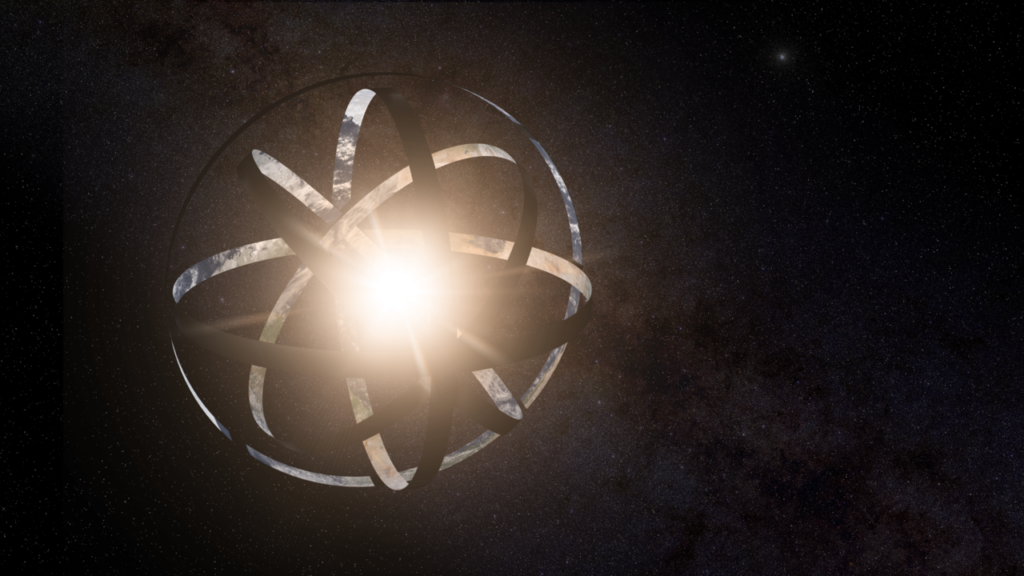
Artist’s rendition of a Dyson sphere. Credit: Kevin Gill.
The energy that a Dyson sphere could collect would originate from a star or a black hole in its centre.
In the case of a star, the energy source would be the nuclear fusion reactions that take place in its core. These reactions release a huge amount of energy in the form of light and heat, which the Dyson sphere would capture and transmit.
In the case of a black hole, the energy could come from several different sources: cosmic microwave background radiation, the black hole’s Hawking radiation, its accretion disk, its Bondi accretion, its corona, and the jets of energy released along the axis of the black hole’s rotation. Of these sources, the energy from the black hole’s accretion disk leads the pack in terms of potential energy capture, as friction and gravitational forces generate large amounts of energy in the form of light and heat.
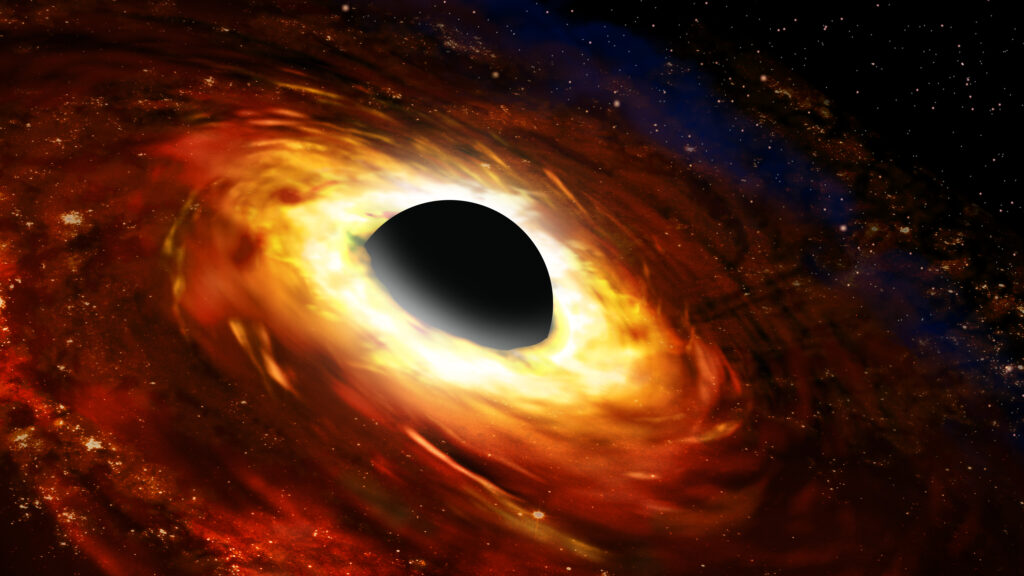
Artist impression of a black hole and its accretion disk. Credit: NOIRLab/AURA/NSF/P. Marenfeld.
Black holes continue to captivate our imagination and expand the frontiers of our understanding of the universe.
While they hold potential for advanced civilizations as energy sources, this technology is far beyond our current reach. However, these ideas not only expand our scientific horizons but also ignite our imagination about the incredible potential of future civilizations.
The quest to understand and utilize black holes stands as a testament to the boundless curiosity and ingenuity of humanity in its quest to explore the cosmos.

Craving more information? Take a look at these recommended TQR articles:
What’s In the Middle of Black Holes, and Why Do We Care?
Time, Black Holes, and the Search for the Theory of Everything
Does the Universe Have a Holographic Memory?
Dark Energy Explorers: A Citizen Science Project Looks Over 9 Billion Years Into the Past
The Cool Neighbors of Our Sun: Citizen Scientists Search for Brown Dwarfs

